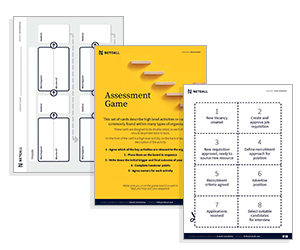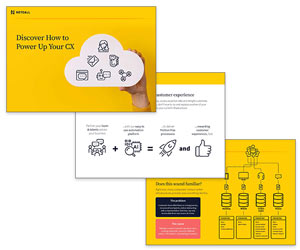It’s 10am and call volumes are up! What can you do about it for the rest of the day?
From delivery issues to uncommunicated marketing campaigns, and even the weather, there are many reasons why your call volumes could be going up.
So how should you react when the volumes unexpectedly increase to limit the impact and make sure your customers still get support?
Here Irina Mateeva, Keith Stapleton, and Tim Milburn, explain the practical steps you can take to bring the situation back under control.
1. Don’t Immediately Panic About Meeting Your SLA Target
Talk to Your Agents to Try and Establish Why Call Volumes Are Up
Try and establish why call volumes are up. Seek feedback from the agents or call analysis results, as this may highlight that a process is broken – for example, the website is down or the IVR has a fault – which could quickly be resolved.
Contributed by: Tim Milburn, Planning Manager and Gold Winner of Resource Planning Manager of the Year at the UK National Contact Centre Awards 2023
Reforecast the Service Level Agreement (SLA) for the Day’s End First

Don’t make any rash decisions! It’s easy to cancel non-work activities for the day or take other actions, but in honesty, that’s a solution for you – not for the staff.
Take stock of the situation by establishing why call volumes are higher than you expected and their nature, so you can predict if the trend is going to continue for the day.
Will you have enough staff later, even if volumes remain higher than forecast? If not, remember the service level agreement (SLA) you are aiming for is for the day’s end, not every part of the day, so reforecast the SLA at day’s end first.
Contributed by: Keith Stapleton, Director at Select Planning Ltd, and Associate Consultant at The Forum
Want to take steps to better deal with the volatility in your contact centre? Read this article to find out more: Top Tips for Dealing With Volatility
Avoid Making Knee-Jerk Decisions That Could Cause Problems Further Down the Line
Lean into your real-time playbook to guide the real-time team on how you can manage the current high volumes you are experiencing in a considered and structured manner.
The most important thing right now is not to panic or put in place knee-jerk solutions that could cause problems down the line.
Contributed by: Tim Milburn, Planning Manager and Gold Winner of Resource Planning Manager of the Year at the UK National Contact Centre Awards 2023
What Is a Playbook?

Chris Hoye
“A playbook is a formalized (written down) pre-agreed set of actions, which are put in place to boost available resource quickly if service levels are suddenly compromised.
It’s a best-practice initiative driven by thinking and agreeing what levers can be pulled across the wider business to get service back on track.
Without a playbook of pre-agreed actions, planning teams can lose precious time asking for help from other teams, getting approval from this manager or that team leader, and reviewing competing priorities – all the while service levels are spiralling out of control.”
As Chris Hoye, Resource Planning Manager at Aviva, explains further in this article on Using Scheduling Playbooks to Manage Spikes in Service Demand.
2. Look for the Quick Wins to Get Call Volumes Back on Track
Look at How Agents’ Breaks Are Scheduled Across the Day

Depending on service levels, you could also look to see if re-optimizing scheduled breaks is appropriate.
However, it’s important not to cancel anybody’s breaks, as it is essential agents still get adequate rest, particularly during busy periods.
Ask Part-Time Staff and Other Departments for Extra Support
If service levels are still looking under pressure, you could also look for other options to increase the resource coverage.
For example, could you ask other departments for any support from their pool of resource? Of course, be mindful that you don’t put other departments at risk of failing their service levels.
Other options include asking if any part-time staff could stay later (or start earlier) and offering overtime to all agents.
In extreme situations, you could also consider contacting staff at home to see if they are able to come into the office or log in to support.
Contributed by: Tim Milburn, Planning Manager and Gold Winner of Resource Planning Manager of the Year at the UK National Contact Centre Awards 2023
Looking to improve communication in your contact centre? Read this article for great advice: 7 Clever Ways to Improve Internal Communication Between Departments
But… Consider Who You’ll Approach! Is It Fair to Always Ask the Same People?
Consider who you’ll approach and in what order.
Is it fair to always ask the same people just because they are amenable?
Communicate the Whole Plan to Those Involved
If you decide to act, it is important to communicate the whole plan to those involved:
- Why you are taking the action
- What is changing (from and to)
- Who is involved
Be informative and clear, as there is nothing gained from over-wording a situation. Also remember to thank people for their support, as recognition is important.
Contributed by: Keith Stapleton, Director at Select Planning Ltd, and Associate Consultant at The Forum
Have a Dedicated Channel to Discuss Service Level Recovery
Setting up a dedicated channel for service level recovery can really help improve communication and speed to success, as Jon Dainton, Head of Customer Service Operations at Fasthosts, explained on a recent Call Centre Helper site visit:
“Our ‘Service Level Recovery’ chat allows us to deal with unpredictable events – such as staff calling in sick or technical issues – in a timely manner.
“Through the channel, issues and solutions can be discussed quickly and openly with all stakeholders. All helping to get everything back to normal as soon as possible.”
3. Keep a Close Eye on the Situation and What Can Be Learned
Review How Everything Is Panning Out Against Your New Prediction
You’ll need to keep a close eye on the situation to see if it’s panning out to your new prediction or not. There may still be a need to make some changes.
Contributed by: Keith Stapleton, Director at Select Planning Ltd, and Associate Consultant at The Forum
Look at What the Impact Might Be for the Following Days Too

When reforecasting, see if the trends remain the same and think about where you would be at the end of the day, but also what the impact for the following days might be as well.
This will allow you to also make decisions on other options you can explore in the contact centre, such as proposing overtime, for example.
Reforecasting is important because it allows us precision in determining what actions to explore to minimize the impact of sudden events.
Note, always make a record of the reason for the deviation and analyse the impact to adjust the forecast accordingly.
Contributed by: Irina Mateeva, Founder of RightWFM
Identify Any Process Improvements to Prevent a Repeat Occurrence
Once the situation has returned to normal, review everything that has happened so any learnings can be considered for the next phase of the planning cycle.
By continually learning, you can keep your playbook updated and/or identify any process improvements to prevent a repeat occurrence.
Contributed by: Tim Milburn, Planning Manager and Gold Winner of Resource Planning Manager of the Year at the UK National Contact Centre Awards 2023
Handling High Contact Volumes Isn’t Just About Adding Resources

In its bluntest form, more work = more staff, but…
You need to understand intimately why customers are contacting you in the first place. Contact centres can be a goldmine of data but communicating with Marketing, IT/Digital, Operations to understand what is heading your way is crucial.
High volumes are often unplanned but volatility can stem from disjointed processes and technology, which often means customer expectations can’t be met, driving failure demand.
Businesses can identify drivers and proactively reduce team pressures by mapping out and improving customer journeys at every touchpoint.
Reactively, technology plays a critical role in balancing demand. If your business is still heavily dependent on inbound phone calls, intelligent callback solutions can help to smooth peaks in demand and maintain customer satisfaction. Whereas, AI-driven conversational assistants on channels your customers actually use, can handle increasingly complex interactions.
Ultimately, success comes from a pragmatic, customer-centric approach, using technology to enhance experiences rather than simply moving problems around – think big, start small, move fast!
Contributed by: Lewis Gallagher, Senior Solutions Consultant, Netcall
If you are looking for more information on increased contacts, read these articles next:
- How to Calculate Forecast Volatility
- The Fundamentals of Contact Centre Peak Management
- Seasonal WFM – How to Prepare for Peaks and Troughs in Contact Volumes
- How to Forecast Demand in the Contact Centre
Author: Megan Jones
Reviewed by: Hannah Swankie
Published On: 12th Feb 2024 - Last modified: 23rd Oct 2025
Read more about - Customer Service Strategy, Editor's Picks, Forecasting, Irina Mateeva, Keith Stapleton, Lewis Gallagher, Netcall, Service Strategy, Staffing, Tim Milburn, Top Story, Workforce Management (WFM)








































